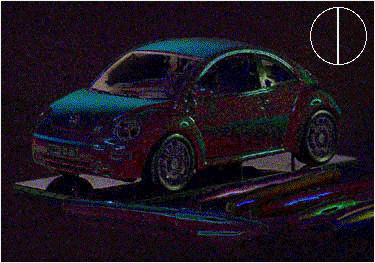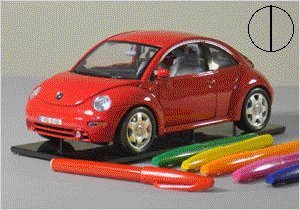Photographic Color Balance
Photographic Color Balance
This is a photo technique to provides the correct color balance, based on the color of the lighting, regardless of the color of the subject.
The trick is to subtract a polarized view of the scene, from an unpolarized version of the same scene. The “difference image” is that of the lighting. The color of the subject is the same in both images and therefore cancel each other out. The camera then sets the color balance for just the lighting.

When driving at night after a rain, water reflects car headlights, tail lights, neon signs, street lights, the moonlight, etc. Reflections off these puddles and many other materials (glass, plastic, paint,pp cars, wet pavement, etc.) are partially or even highly polarized and are easy to analyze.
Example:
To photograph this still-life scene the camera needs to ignore the subject colors and color balance for the illuminant only.
| = |  |
| When added together, the “difference image” eliminates the colors of the objects but leaves the reflections from various light sources that are analyzed for color. |
The technique can be designed into cameras:
- The most economical version samples the scene through a polarizing filter, and compares the scene with and without the filter.
- A more advanced version compares the scene through two fixed filters, one each with horizontal and vertical axes.
- The most accurate version uses a polarizing filter rotated mechanically (or electronically like the polarizer in a TV’s LCD screen), and compares the difference signals to the unfiltered image.
The color analysis does not have to be done using image sensors, as implied with images of the scene here, but with photo-detectors behind the red, green and blue polarizing filters.
HinesLab currently offers consulting in the photographic field. Please contact Steve Hines:



